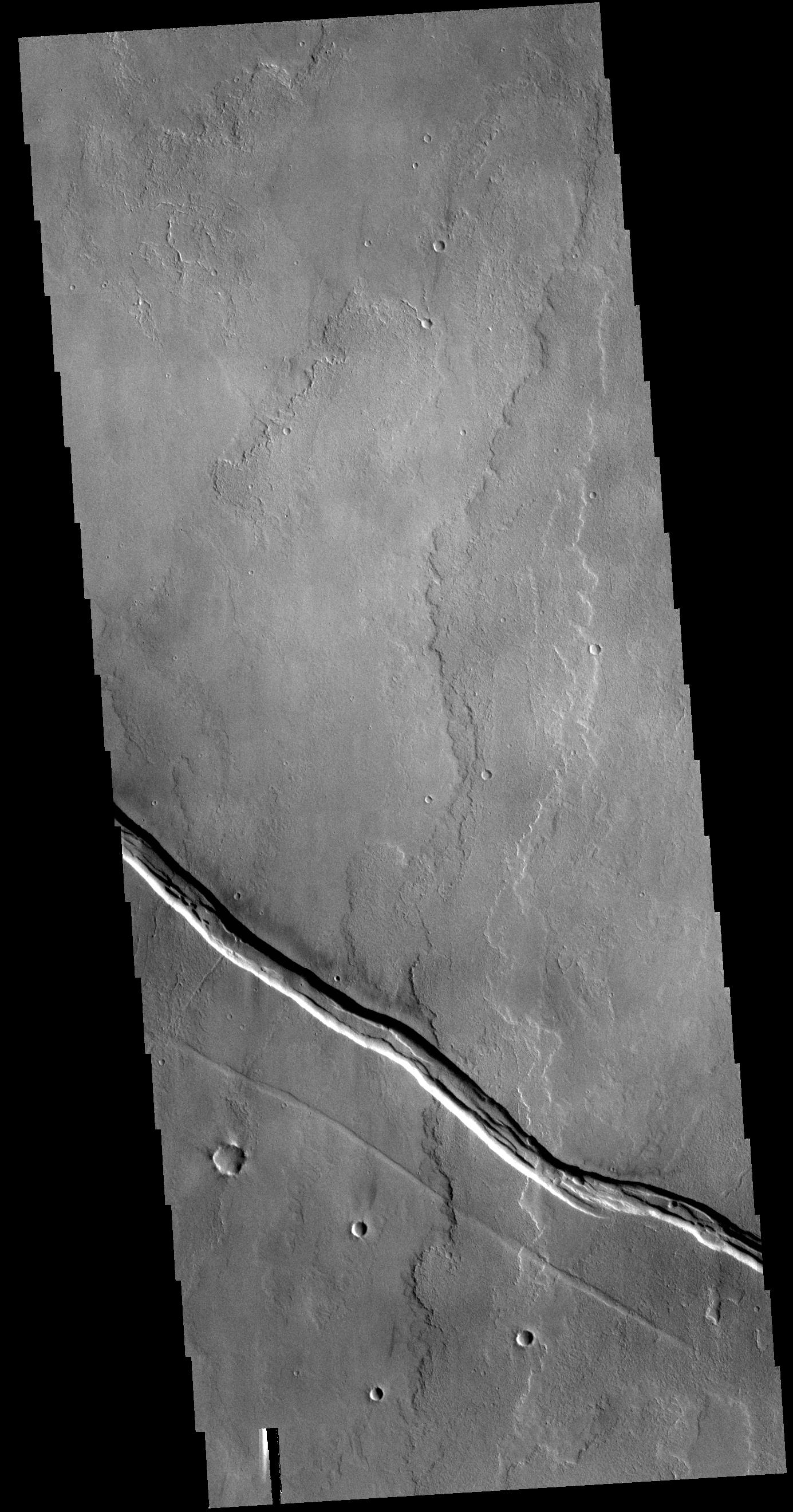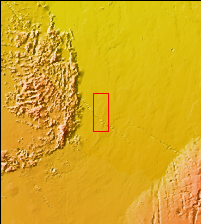
|
Tharsis Volcanics
- Click the image above for a larger view
- Full-Res JPEG (1385 x 2640) (461.1 kB)
- Full-Res TIFF (1385 x 2640) (2.8 MB)
Caption:

Context image
This VIS image shows part of the Tharsis lava plains between Sulci Gordii and Ulysses Fossae. While large volcanoes and huge lava flow sheets dominate the Tharsis region, extensive tectonic features are also present. The entire Tharsis region forms a bulge on the equatorial part of Mars, generated by the uplift of magma rising through the crust. The motion of subsurface magma created extensional forces, tearing the surface apart releasing the magma in floods of lava and volcano building events. At the same time the extension cracked the surface creating the faults and graben also seen in the region. In this image, the linear graben post-date the lava flows.
Orbit Number: 78394 Latitude: 17.6427 Longitude: 235.778 Instrument: VIS Captured: 2019-08-17 06:43
Background Info:
Please see the THEMIS Data Citation Note for details on crediting THEMIS images.
NASA's Jet Propulsion Laboratory manages the 2001 Mars Odyssey mission for NASA's Science Mission Directorate, Washington, D.C. The Thermal Emission Imaging System (THEMIS) was developed by Arizona State University, Tempe, in collaboration with Raytheon Santa Barbara Remote Sensing. The THEMIS investigation is led by Dr. Philip Christensen at Arizona State University. Lockheed Martin Astronautics, Denver, is the prime contractor for the Odyssey project, and developed and built the orbiter. Mission operations are conducted jointly from Lockheed Martin and from JPL, a division of the California Institute of Technology in Pasadena.
Cataloging Keywords:
| Name | Value | Additional Values |
|---|---|---|
| Target | Mars | |
| System | ||
| Target Type | Planet | |
| Mission | 2001 Mars Odyssey | |
| Instrument Host | Mars Odyssey | |
| Host Type | Orbiter | |
| Instrument | Thermal Emission Imaging System (THEMIS) | |
| Detector | ||
| Extra Keywords | Grayscale, Thermal, Volcano | |
| Acquisition Date | ||
| Release Date | 2019-09-27 | |
| Date in Caption | 2019-08-17 | |
| Image Credit | NASA/JPL-Caltech/ASU | |
| Source | photojournal.jpl.nasa.gov/catalog/PIA23475 | |
| Identifier | PIA23475 | |
